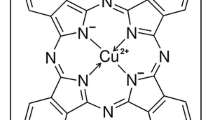Abstract
In this work, the Wilhelmy method is shown to be very suitable for studying electrocapillary effects in molten salts. Unlike the optical methods usually used this method, can easily be used in automated set-ups. High accuracies of 0.3° in the contact angle were easily obtained. First experiments are reported on the electrocapillary effect on gold in molten carbonate under air. Small changes of 4° to 8° in the contact angle were found for potential excursions of –300 mV. At 650 °C a value of 65 ± 1° was obtained at Open Cell Voltage (OCV) which is in good accordance with the values found by Mugikura et al. and Matsumura et al. The wetting of gold by carbonate decreased at higher temperatures. In the literature, both positive and negative temperature effects have been reported, obtained in different gas atmospheres. Possibly the sign depends on the gas atmosphere used. However, this discrepancy can also be caused by differences in the characteristics of the gold surface used in the different studies.
Similar content being viewed by others
Author information
Authors and Affiliations
Additional information
Received: 23 October 1997 / Accepted: 4 December 1997
Rights and permissions
About this article
Cite this article
Peelen, W., Hemmes, K., Kamping, H. et al. The application of the Wilhelmy balance to the measurement of electrocapillary effects in molten carbonate. J Solid State Electrochem 2, 334–339 (1998). https://doi.org/10.1007/s100080050109
Issue Date:
DOI: https://doi.org/10.1007/s100080050109




